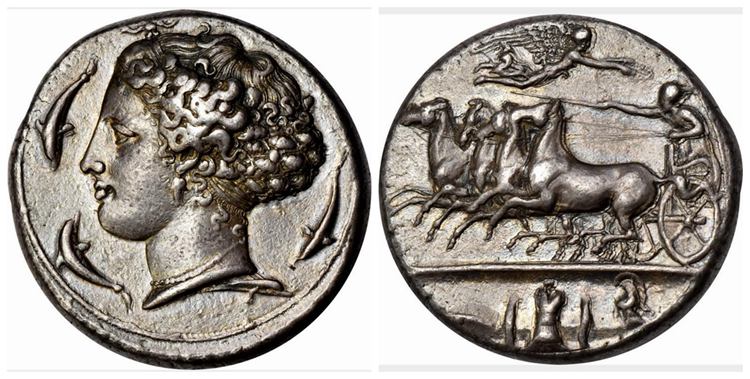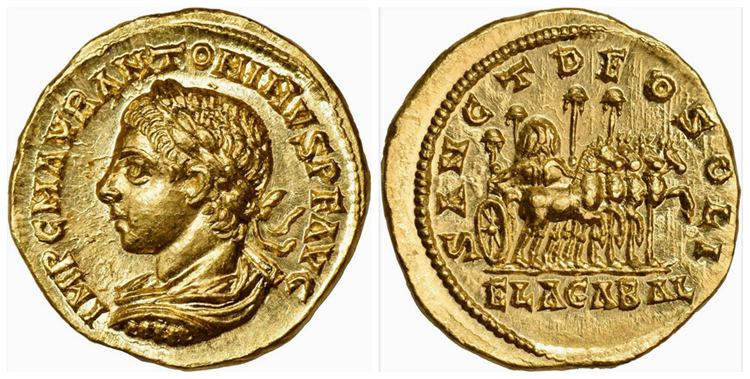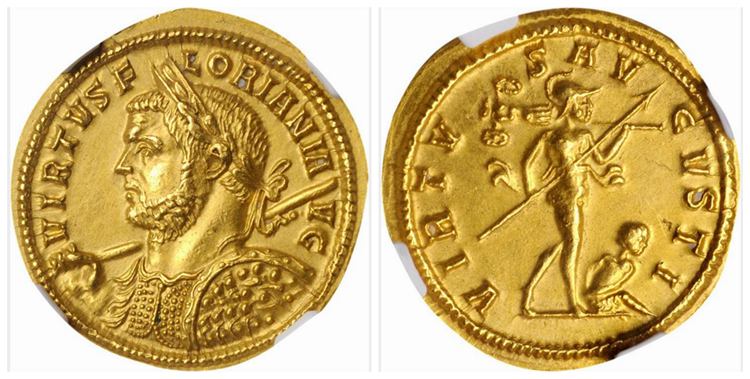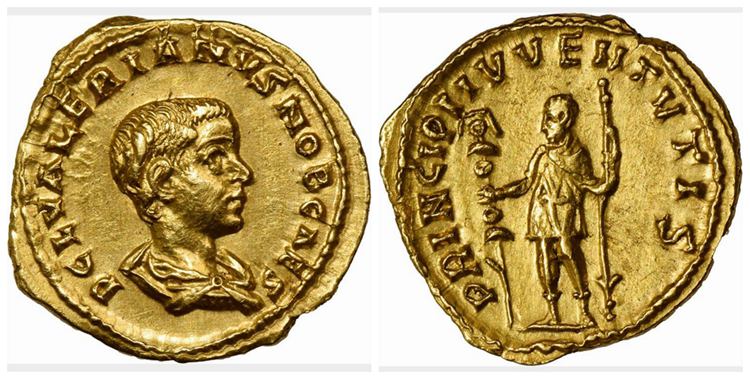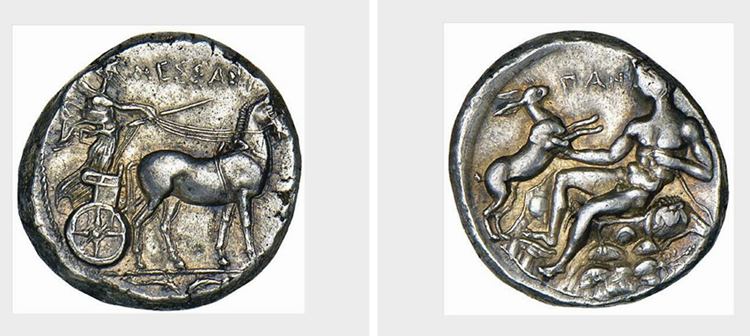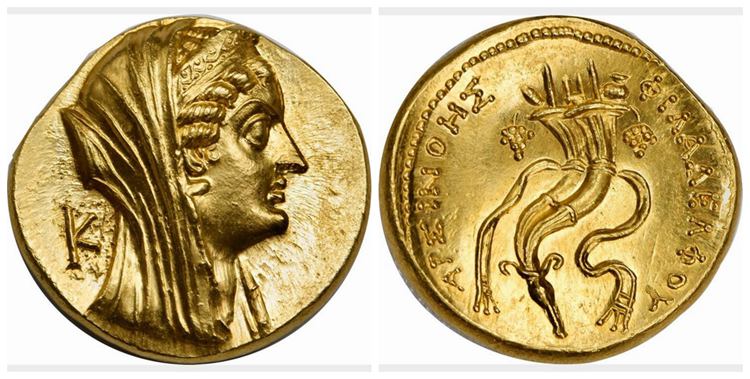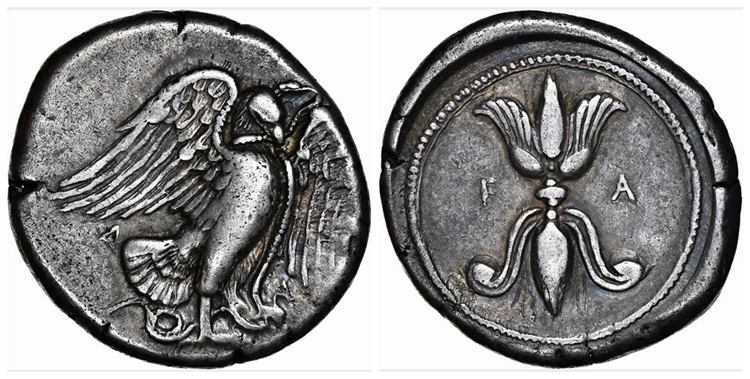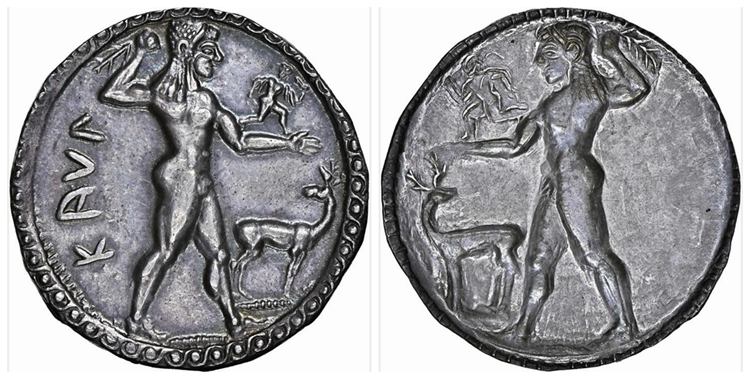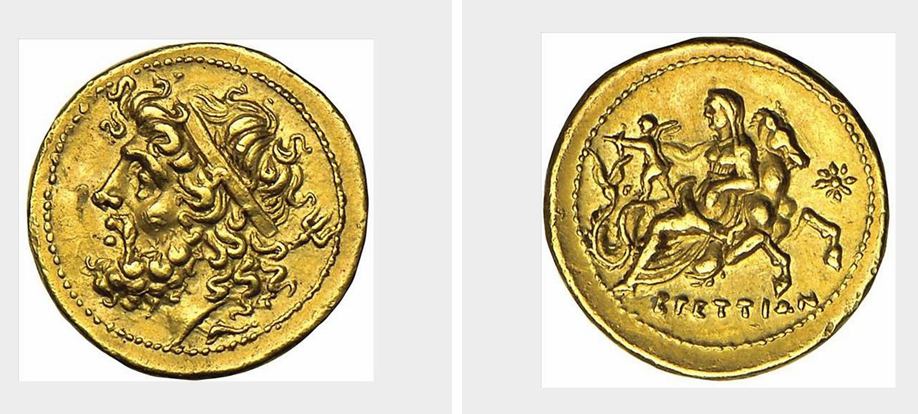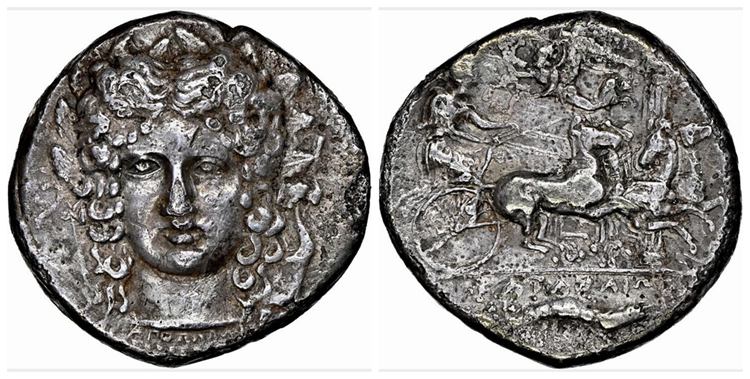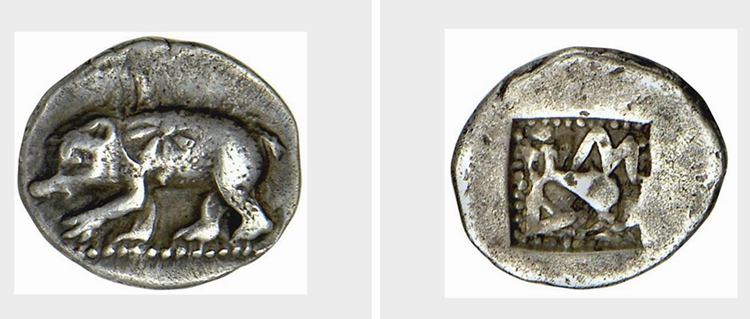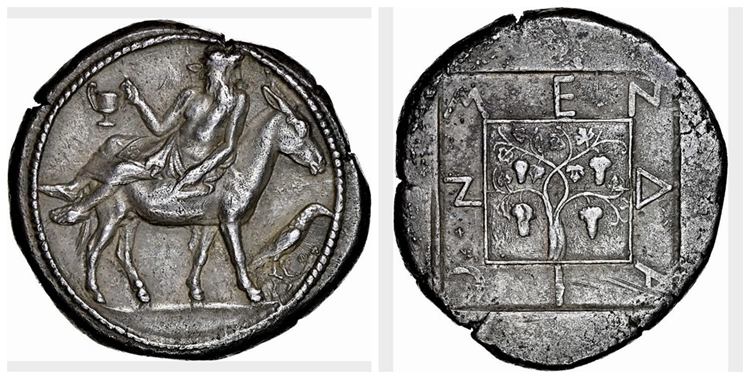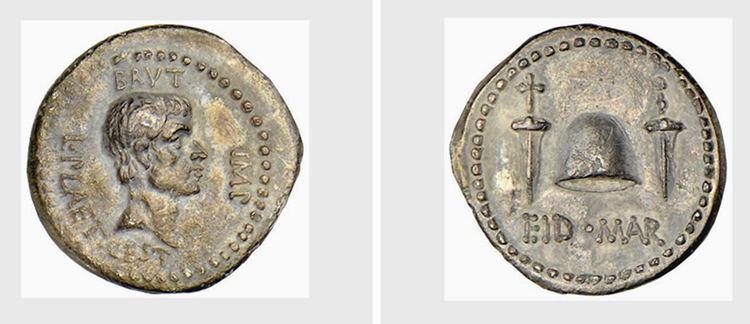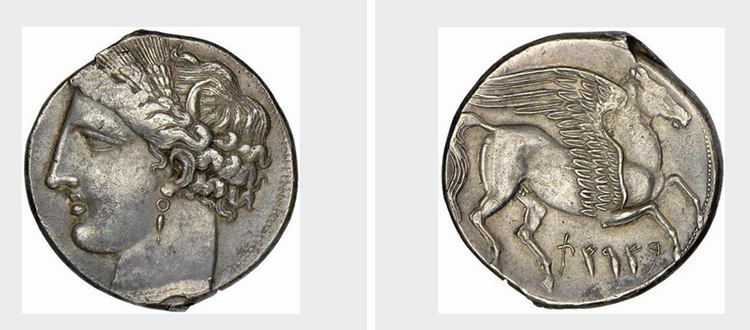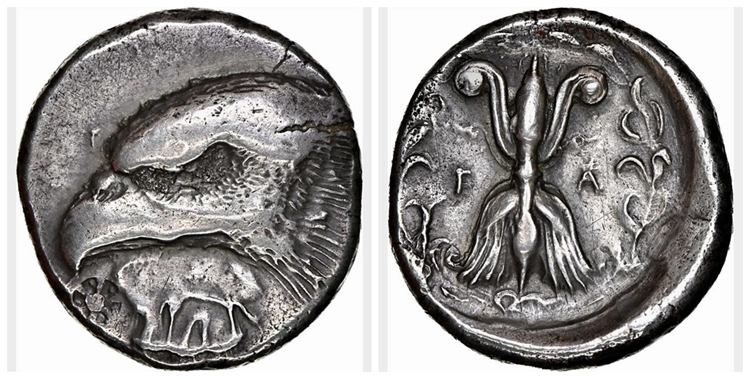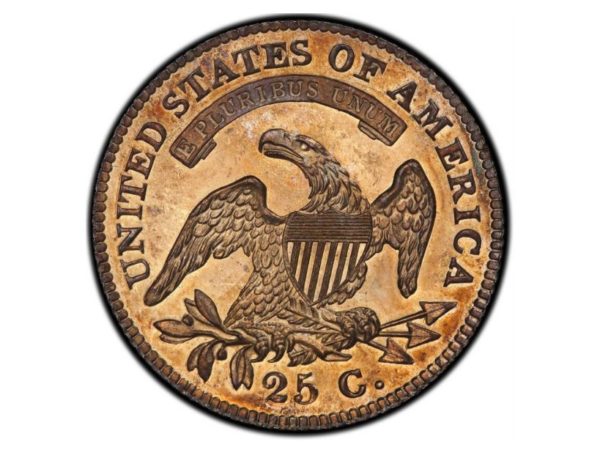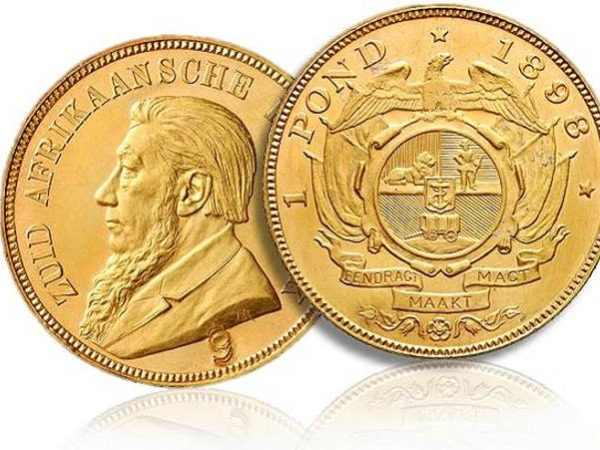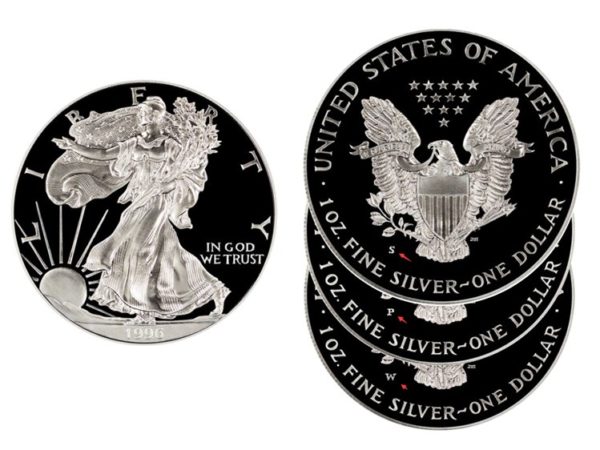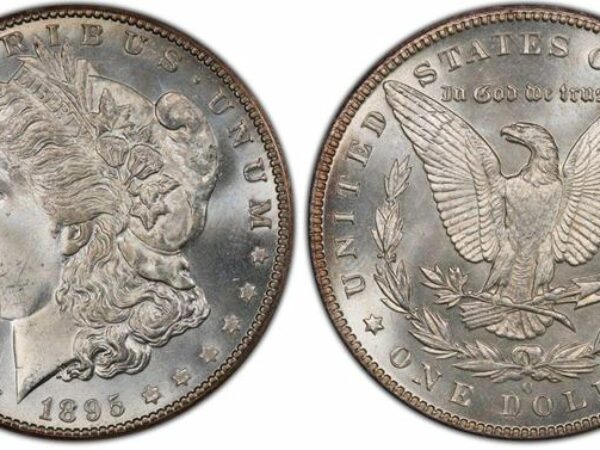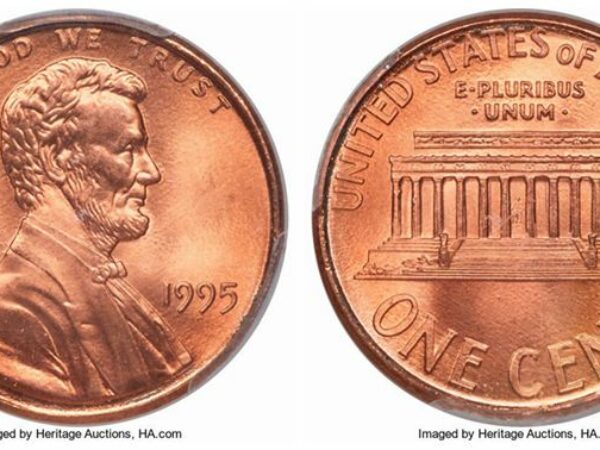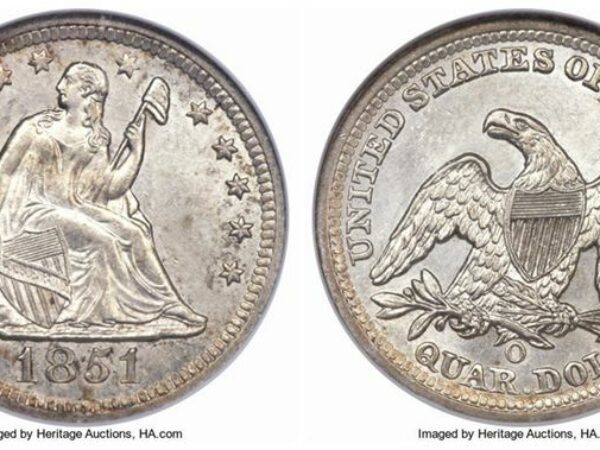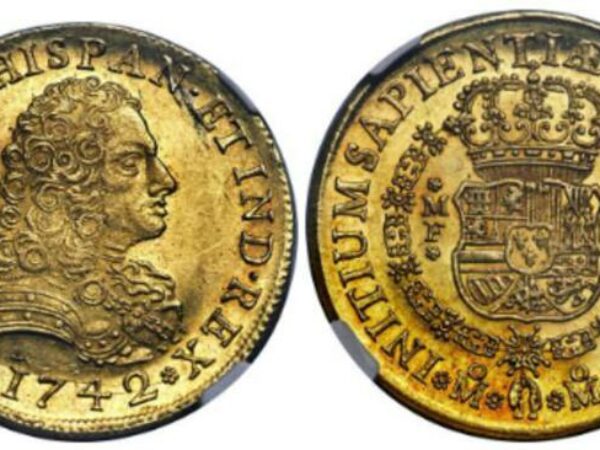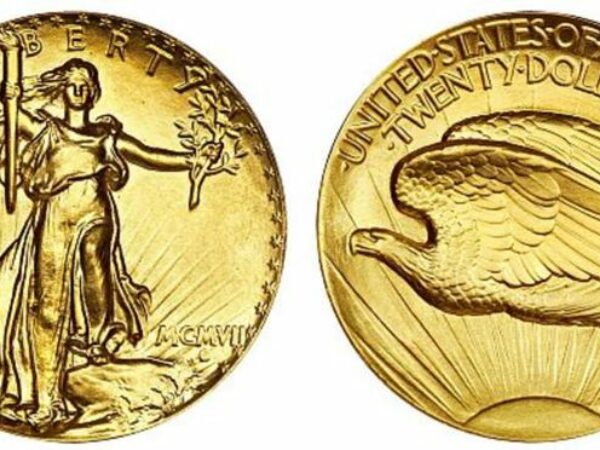Ever wonder what are the rarest ancient coins to look out for? After hours of digging through and reviewing the internet, I’ve come across 15 old coins that aren’t commonly known but can be extremely valuable.
Ancient coins can be mysterious and confusing for some people, especially for those that have never dealt with them before. From thousands of years old coins to high-worth rarities, here are 15 rare ancient coins you probably didn’t know existed.
Regardless of your interest level in history, you are probably intrigued by rare antiques. So, without further ado, let’s take a look at some of the most expensive ancient coins ever sold at auction.
Table of Contents
15 Rarest Ancient Coins In the World: List
No |
Ancient Coin |
Grade |
Price Sold |
1 |
SICILY. Syracuse. Dionysios I, 406-367 B.C |
Very Fine |
$360,000 |
2 |
ELAGABALUS, A.D. 218-222. AV Aureus |
– |
$312,000 |
3 |
FLORIANUS, A.D. 276. AV Aureus |
Fine |
$144,000 |
4 |
VALERIAN II AS CAESAR. AV Aureus A.D. 256-258 |
AU |
$132,000 |
5 |
MESSANA. Ca.420-413 B.C. |
– |
$109,250 |
6 |
PTOLEMAIC EGYPT. Arsinoe II Philadelphos, Died 270/68 B.C |
– |
$108,000 |
7 |
PELOPONNESOS. Elis. Olympia. AR Stater |
Very Fine |
$55,200 |
8 |
ITALY. Bruttium. Kaulonia. AR Stater |
Fine |
$49,200 |
9 |
THE BRETTII. Bruttium. Time of the Second Punic War,ca.221-201 B.C |
Extremely Fine |
$48,875 |
10 |
SICILY. Katane. AR Tetradrachm |
Extremely Fine |
$48,875 |
11 |
MANTINEA. Arkadia. Ca.490s-480s B.C |
– |
$40,250 |
12 |
MACEDON. Mende. AR Tetradrachm |
Extremely Fine |
$33,600 |
13 |
Marcus Junius Brutus, the Tyrannicide, d.42 B.C |
– |
$32,200 |
14 |
CARTHAGE. Zeugitania. 270-260 B.C |
Extremely Fine |
$31,625 |
15 |
SICILY. Agrigentum. AR Tetradrachm 415-400 B.C |
Very Fine |
$26,400 |
1. SICILY. Syracuse. Dionysios I, 406-367 B.C
Price: $360,000
Grade: Very Fine
The engraving of Kimon, a timeless classic in terms of style and creativity, is highly treasured among knowledgeable ancient art collectors because it exhibits a more realistic approach to portraiture than his contemporaries, such as Euainetos, who painted considerably more idealized portraits.
This extraordinary specimen, which is rarely seen as brilliant and appealing, especially when bearing Kimon’s signature, should inspire great enthusiasm and excitement. The fact that this appearance likely marks its debut at a public sale in more than a century heightens the excitement even further.
The obverse depicts a charioteer steering a quadriga to the left while holding the kentron and reins; above, Nike is crowned and is flying to the right; below, there is a heavy exertional line, a military harness, a shield, greaves, and cuirass, all of which are united by a horizontal spear.
Arethousa’s head is depicted on the reverse, facing left and wearing banded net for her hair, pearls for her necklace, and earrings.
2. ELAGABALUS, A.D. 218-222. AV Aureus
Price: $312,000
Extremely beautiful and brilliant don’t seem to be strong enough descriptors to capture the remarkable eye appeal displayed on this beautifully struck flan that dates back to antiquity. With razor-sharp tools and brilliant fields from which the flan’s shine mesmerizingly bursts out, both sides are tantalizingly done.
The reverse depicts all the pageantry associated with the then-expanding religion of Elagabal, an Arab-Roman sun god from whom Elagabalus took his name. The youthful emperor’s image is depicted in high relief with lovely eastern style.
There are just TWO known examples of this EXCEPTIONALLY RARE kind, both from this die marriage, and it is not mentioned in the RIC. One, a noticeably less spectacular specimen (rated NGC AU-, Strike: 5/5 Surface: 4/5) brought in nearly $77,000 at auction in May 2013, while the third specimen, which had been handled considerably and was regrettably kept in an old bezel, was sold in Triton III (11/1999).
The current near-Gem is unquestionably on the brink for the connoisseur who longs for the best that the Roman world has to offer.
3. FLORIANUS, A.D. 276. AV Aureus
Price: $144,000
Grade: Fine
The laureate and cuirassed bust of VIRTVS FLORIAN AVG is seen on the obverse of this historic coin, facing left and clutching a shield and a spear over his shoulder. The reverse has VIRTVS AVGVSTI, Virtus moving forward to the right while holding a spear and a prize; to the bottom right, a captive who is chained sits with his head to the right.
This sample, which is VERY RARE and incredibly intriguing, produces a particularly powerful strike that is also well-centered. Its attractiveness is further enhanced by a gorgeous golden-orange tone with incredible intensity.
4. VALERIAN II AS CAESAR. AV Aureus A.D. 256-258
Price: $132,000
Grade: AU
Despite having a little irregular flan and a few faint marks that give it the brushed designation, this example, which is EXCEEDINGLY RARE and fascinating, shows very little evidence of real handling and has excellent brilliance and glossy appeal throughout.
Issues of Valerian II, Gallienus’ eldest son and prospective successor, are highly rare and especially alluring to the Roman gold collector. The heights to which this item could rise are really amazing when you consider the illustrious pedigrees and cabinets it has graced.
The bareheaded, draped, and cuirassed bust right of P CL VALERIANVS NOB CAES is depicted on the obverse of this uncommon ancient coin; On the reverse, however, we see PRINCIPI IVVENTVTIS, Valerian standing to the left and holding a signum and a spear that has been turned around.
5. MESSANA. Ca.420-413 B.C.
Price: $109,250
Samian Ionian Revolt refugees took Zankle in 493 B.C. with the help of Anaxilas, the ruler of Rhegion. Anaxilas had believed that by using these Samians, he would be able to overthrow Hippocrates, the dictator of Gela and later the ruler of Zankle.
The Samians, on the other hand, reached a deal with Hippocrates, depriving Anaxilas of his desire to rule the Straits. A short while later, most likely in 488 B.C. The town was inhabited by Messenians from the Peloponnese after Anaxilas drove out the Samians, took over control of it, and changed its name to Messana.
This hypothesis is supported by the coin in question. The reverse portrays a young Pan clutching a pedum, a throwing stick used to dispatch hares, in his left hand and a springing hare in his right hand. A notable addition to the common racing hare design that dominated Messana’s coinage for the majority of the 5th century was this late and short-lived coin type.
The Messana currency underwent some alterations after 430 B.C. The male charioteer was substituted with the nymph Messana, and the exergue was embellished with additional symbols like dolphins, a cicada, barley ears, or an eagle slaying a serpent.
6. PTOLEMAIC EGYPT. Arsinoe II Philadelphos, Died 270/68 B.C
Price: $108,000
The current specimen, which is unquestionably among the most brilliant and remarkable examples of the type ever seen, displays tremendous shine and fresh originality that shimmers throughout, all while the bust is displayed in extraordinarily high relief.
The reverse features a majestically centered strike with all design elements clearly visible, and the coin’s concavity, which is made possible by the equivalent obverse relief, makes the coin shine brilliantly when it is cradled back in the hand.
The grade of the ancient gem is extremely impossible to recreate, making it extremely unusual and certain to spark a lot of interest.
The Obverse shows a veiled head facing right wearing stephanos and a ram’s horn. In the backdrop, there is a lotus-tipped scepter with the letter K to the left. Filleted double cornucopia with grape bunches dangling at the sides is depicted on the reverse.
7. PELOPONNESOS. Elis. Olympia. AR Stater
Price: $55,200
Grade: Very Fine
The current specimen is struck much better than other Elis issues on an extraordinarily handsome and symmetrical flan, making it a premium example of this RARE and frequently crude type. This example is undeniably deserving of the fine style distinction as well as a star for great eye appeal due to the stark contrast provided by the precise detailing.
Only uniform wear is observed across the devices, and in the shielded sections, this problem is plagued by indications of radiant rainbow toning.
This exceptional piece, which is sure to pique collectors’ interest, will undoubtedly entice the connoisseur with its beauty in strike and preservation, as well as its alluring pedigree and status as one of only five examples of this die marriage mentioned by Seltman—one of the others (Seltman-140a) being the BCD specimen that realized a hammer price of CHF 27,000 (roughly $21,000) in May 2004.
8. ITALY. Bruttium. Kaulonia. AR Stater
Price: $49,200
Grade: Fine
On the reverse of this historic rare, Apollo is seen moving to the right while carrying a branch overhead and outstretched in front of him. A little daimon is running to the right while grasping a branch in each hand. The reverse is similar to the obverse, but with a daimon outline and a radiating border all around.
This exceptional specimen exhibits freshness typically saved for recently manufactured currency, making it about as enticing and gorgeous as one can hope to find for a coin almost 2,500 years old. The strike is really nicely done, bold, and well centered, and the tone melds incomparably well with the curves.
The existence of a mint shine that radiates just as beautifully as the day it was taken off the anvil adds to the object’s eerie attraction. The sheer possibility of finding one to rival, much alone surpass, its beauty is inherently unlikely, thus this representative will definitely impress the connoisseur who wants nothing less than the greatest. In such a sublime state of preservation, of INTENSE RARITY.
9. THE BRETTII. Bruttium. Time of the Second Punic War, ca.221-201 B.C
Price: $48,875
Grade: Extremely Fine
The southern Italian mountains were home to a variety of indigenous tribes. They were dominated by the Lucani. They started conquering the Greek immigrants in the last part of the 5th century, and by 390 B.C. they had much of Lucania under control and had imposed their Oscan language on the peninsula.
The original inhabitants of the peninsula, who were now oscanized, declared their independence in 356 B.C. and adopted the name Brettii. They kept taking over other Greek settlements along the coast, becoming more and more Hellenized in the process. Because they had backed Pyrrhos, Rome enslaved them and took over a portion of their country.
They abandoned Rome during the Second Punic War following her terrible defeat at Cannae in 216 B.C. and sided with Hannibal, giving him his final base in Italy. In response, a victorious Rome took more of their land, surrounded them with colonies, and effectively made them into slaves.
The coin shown above, which was minted to pay for the battle with Rome, serves as an excellent example of how thoroughly the Brettians had become Hellenized by the end of the third century B.C. The Pyrrhic silver prototype, which depicts the sea nymph Thetis on a hippocamp while she considers her son Achilles’ shield, served as inspiration for the reverse’s fine engraving and exquisite composition.
This coin replaces the shield with Eros and pairs Poseidon with his wife Amphitrite. This coin rivals the remarkable Italian and Sicilian gold issues struck in the fourth and third century in terms of artistic quality.
10. SICILY. Katane. AR Tetradrachm
Price: $43,200
Grade: Extremely Fine
The Laureate head of Apollo is depicted on the reverse, slightly leaning left; [XOIPIN to outer left], bow to left, and lyre to right. Reverse: A charioteer is driving a quadriga to the right as it starts to round a column in the background while holding a kentron and the reins; above, Nike the Crowned is soaring to the left; in the exergue, a crayfish is to the right.
This VERY RARE and EVER-DESIRED variety is at the top of the usually sought-after facing head concerns, and in the bigger format that the Tetradrachm denomination allows, despite some rather noticeable roughness to the surfaces.
Unquestionably the RAREST facing head types from Sicily are those engraved by the artist Choirion. This massive specimen’s remarkable pedigree, which includes the Salton cabinet as well as luminaries from the numismatics world of the late 19th and early 20th centuries Jameson and Evans, adds even more fascination and interest to it.
11. MANTINEA. Arkadia. Ca.490s-480s B.C
Price: $40,250
This ancient coin depicts a bear strolling on a line of pellets, with a countermark of a star inside an oval punch on her shoulder. The M-A symbol is separated on the back by a dolphin swimming in an incuse square.
Prior to around 477 B.C., when the mints at Tegea and Mantinea united to produce the Confederate issues, Kleitor was the only mint for the Arkadian Confederate coinage, claims Williams. Prior to approximately 477 B.C. There were separate Mantinean coin types, which shows that Mantinea may not have joined until then.
It should be remembered that Mantinea and Tegea frequently engaged in border wars with one another, and it’s conceivable that neither state belonged to the Confederacy prior to around 477 B.C. Fear of Persia appears to have been the driving force behind motivating the Arkadians to put aside their differences and battle, albeit grudgingly, against a common adversary during the years about 490–479 B.C.
12. MACEDON. Mende. AR Tetradrachm
Price: $33,600
Grade: Extremely Fine
This uncommon ancient coin’s obverse features an inebriated Dionysos holding a kantharos while sitting on the back of a standing donkey to the right, and a bird perched on a branch to the right. A linear square with a vine with leaves, tendrils, and four bunches of grapes may be found on the reverse.
This exceptional specimen, a well-liked and somewhat RARE variety, boasts a beautiful style strike, a charming gunmetal gray tone, and a pleasing centering. On the reverse, there are some very small blemishes and horn silver, but these things do not at all take away from the aesthetic masterpiece being provided here.
Given its age and “recent” discovery as part of the Kaliandra Hoard in 1913, it is believed to have only had two long-term owners, Robert Jameson and Salton, since it was placed in the 5th century B.C. This is an intriguing fact given its age.
13. Marcus Junius Brutus, the Tyrannicide, d.42 B.C
Price: $32,200
The currently presented example exhibits the tiniest buckling and signs of a surface split on the obverse, both of which point to plating. Nevertheless, despite some granularity and surface scratches, there is no sign of a core appearing. The adhesion of a noticeable patination, especially on the edge, more than makes up for the weight loss that these last aspects may have caused.
The issue was created under the direction of Lucius Plaetorius Cestianus, Brutus’ lieutenant, just before the tragic second battle of Philippi, which ended with Brutus’ suicide.
The assassins’ daggers are depicted on the reverse together with a pileus, a liberty cap linked to Castor and Pollux, the twin deities who are said to have intervened in the crucial battle of Lake Regillus where Rome beat the Latins.
Ironic in particular is the depiction of Brutus on the obverse of this coin. One could argue that Caesar’s portrait appearing on coins from January to February 44 B.C., the first time a living Roman appeared on coins from the Roman mint, increased skepticism about his intentions as king and likely served as one of the many reasons for his assassination.
14. CARTHAGE. Zeugitania. 270-260 B.C
Price: $31,625
Grade: Extremely Fine
During the First Punic War against Rome, the Carthaginians struck this huge silver coin in Sicily that is equal to five Shekels. It displays a decline in Greek influence compared to Carthage’s earlier Siculo-Punic coinage.
Tanit, the principal deity of Carthage, is clearly depicted as the head, not a Carthaginian adaptation of the Syracusan Artemis-Arethusa. The reverse, however, is a copy of Timoleon’s Syracusan Staters, which were inspired by Corinthian art (344–317 B.C.). The Carthaginian treatment is nearly identical to the prancing free horse motif found on modern Carthaginian gold Tristaters.
15. SICILY. Agrigentum. AR Tetradrachm 415-400 B.C
Price: $26,400
Grade: Very Fine
This Olympia Stater is beautifully flanked and exceptionally well centered. A countermark (rosette) and a few minor scratches are visible on the metal’s slightly porous surface.
Even so, this issue is rich in detail, and it is distributed evenly so that nothing is lost in the process. Finally, given their connection to the first century of the Olympic games, any collector interested in Ancient Greek issues must include one of these pieces in their collection.
The reverse depicts a Winged thunderbolt with volutes, with F-A across field, all within wreath, while the obverse features an Eagle head left, poplar left to left.
Conclusion
Ancient coins can still fetch huge sums of money today, even though they have no intrinsic value. Their rarity and history is what makes them valuable. Some of the coins on this list are just extremely rare, and others are interesting because they were struck by or feature one of history’s most notorious rulers.
The price of ancient coins goes up and down based on a number of factors, including their rarity and popularity among collectors. Some rare ancient coins can be found for relatively low prices because only a few people are really interested in them—for instance, you can find a Roman Empire Coin Septimius Severus Cista for as little as $49. While others can fetch prices of several hundred thousand dollars because they are known as rarities among wealthy collectors.

